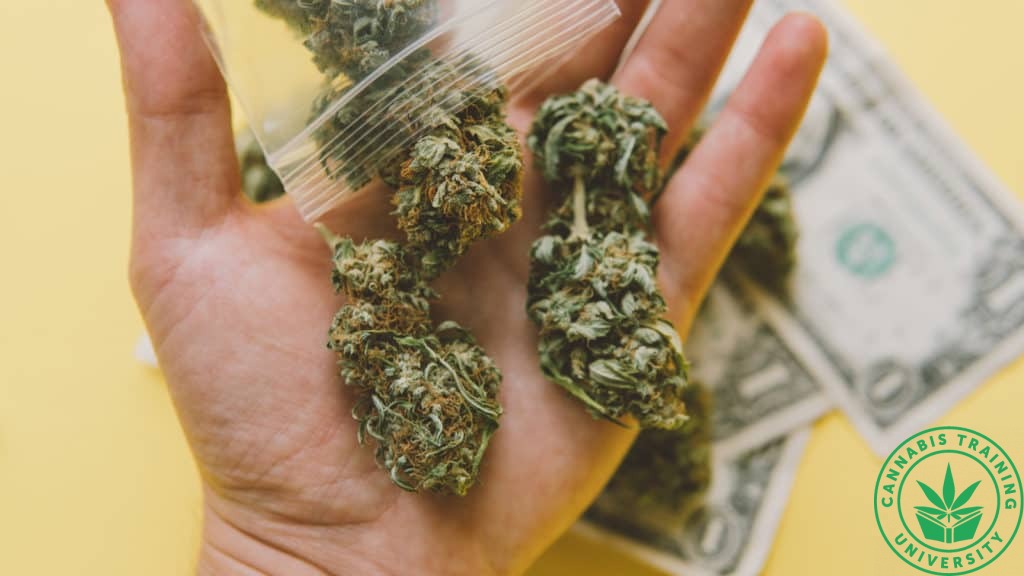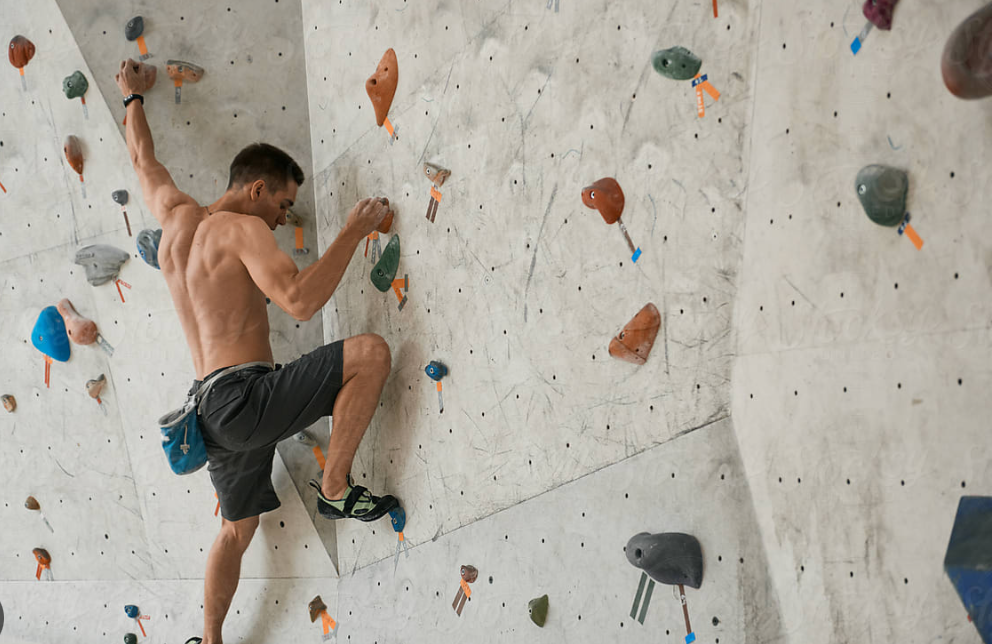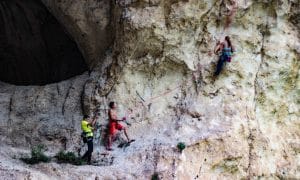Training
Indiana Cannabis University
Published
2 years agoon
By
admin
In Indiana, you can enroll to be a budtender, bud trimmer or any other worker in the cannabis industry. Enrollment is now open at the Indiana Cannabis University.
Become a student today and you will get to advance or change your career to one that is more rewarding and successful. Don’t shortchange yourself. You owe it to yourself to have a successful future and the cannabis industry is showing immense profitability for you to do so.
The Cannabis Positions
Many positions are being opened for new employees, but before you get a job in the cannabis industry, you have to get the proper training for the skills, expertise and knowledge necessary to be most efficient. There are so many people who are choosing alternative medicine and that is why medical marijuana is becoming so popular and more states are making it legal to residents and visitors.
You have to line up yourself to be a part of this big piece of pie or you will be left behind. The Cannabis Training University has opened its doors to people living in the state of Indiana and all over the world. If you are not interested and want to be left behind, then the next best thing is to tell someone close to you about this incredible opportunity. The courses are not difficult and you can graduate in less than six months at your choosing.
House Bill 1039
The proposed House Bill 1039 in Indiana is a great bill that will hopefully pass there soon. Here is the summary of House Bill 1039:
Cannabis is used for both adult and medical purposes. After marijuana is delisted from the federal schedule I list of banned substances, it can be used by those who are at least 21 years old and have serious medical conditions as determined by their doctor. establishes an excise tax on adult-use cannabis and mandates that retailers submit the levy to the state department of revenue for deposit into the state general budget.
Veterans are exempt from paying sales tax on cannabis used for medical or recreational purposes. creates a cannabis program to allow individuals with a valid permission to cultivate, process, test, transport, and sell cannabis.
Creates the Indiana Cannabis Commission (ICC) as a state agency to manage, carry out, and police the program. It also creates the ICC advisory committee to assess the program’s efficacy. permits holders to take actions to stop cannabis from being diverted to unauthorized parties. establishes requirements for the correct labeling, packaging, and testing of cannabis and cannabis-related products before they are made available for purchase. prohibits the packaging of cannabis in a way that might appeal to kids.
Approving cannabis research in compliance with ICC regulations. creates a process for the expungement of a cannabis-related conviction should the offense that led to it become lawful. introduces conforming changes
The Cannabis Courses in Indiana
Take all eight courses at the Indiana Cannabis University and graduate with a marijuana certificate. With this certification added to your resume, you can expect to be taken seriously by more employers in the cannabis business.
The employers will see that you are more prepared than other job candidates who may not have taken the extra step to get training offered by CTU, an accredited cannabis school!
The marijuana courses offered at the Cannabis Training University are hands-on and quite interactive. You will get to watch videos with instructors giving an in-depth explanation on various topics such as:
- Making edibles and other products such as hash oil and tinctures
- The marijuana laws in each state
- Growing weed indoors and outdoors
- The various cannabis strains and where they were originated from
- Which state has legalized recreational pot
- Marijuana legalization in countries such as Amsterdam and Canada
- Which cannabis jobs are more lucrative
- How to apply for a cannabis job
- How to obtain a medical marijuana card
- The illnesses that qualify patients for a medical marijuana card
- How to open a cannabis business
- How to cook with cannabis
- How to start an edible cannabis business
- How to run a medical marijuana clinic
Students also have access to electronic books with more details on the marijuana plant, the industry and the various strains along with other pertinent information.
Indiana Cannabis Laws and Jobs
Indiana’s cannabis laws are remain stringent and narrowly focused as of 2023. State law continues to prohibit the possession, sale, and use of marijuana, with the exception of some limited medical uses.
Medical marijuana: A law permitting the administration of low-THC cannabidiol (CBD) oil to treat uncontrollable epilepsy was approved in Indiana in 2017.
A fatal illness with a life expectancy of less than six months, severe types of arthritis, Parkinson’s disease, and Huntington’s disease are now covered by the state’s medical marijuana program as of 2021. The program is still restricted and only permits the use of marijuana products that cannot be smoked, like oils and edibles.
There has been no progress in Indiana in decriminalizing the possession of small amounts of marijuana for personal use. Marijuana possession, whatever of quantity, is still illegal and punishable by fines and jail time.
FREE E-BOOK
Get our top rated STRAIN GUIDE!
Recreational Use: It is still illegal to use marijuana for recreational purposes in Indiana, where it is not permitted. Fines and jail time may be imposed for having marijuana in your possession for personal use in any quantity.
Except for registered medical marijuana providers working under the state’s restricted scheme, marijuana cultivation and distribution are still prohibited in Indiana. Marijuana growing and distribution without a license can incur steep fines and jail time.
In conclusion, Indiana’s cannabis laws will still be stringent and limited in 2023. Only a small number of qualifying ailments can be treated with medical marijuana, and recreational marijuana use, possession, and sale are still banned.
But this does not mean you can’t start a cannabis business in Indiana.
There are numerous opportunities to work in the cannabis business without working directly with cannabis plants. The marijuana industry needs the same jobs filled as other industries such as:
-Accounting
-Marketing
-Sales
-Insurance
-Web Design
-Blog Writing
-Security
“
There are over 300,000 jobs in the cannabis industry. CTU trained me for one of them!
– Johanna Rose
Makes $24.50 @ THC +
-Credit card processing
And many more! Don’t let restrictive and out dated cannabis laws stop you from pursuing a cannabis career!
The Cannabis Industry
The cannabis industry has seen immense growth and so it will do you well to sign up as a student at the Indiana Cannabis University in collaboration with CTU.
Yvonne Edwards has been a student now for six months and had this to say, “I graduated recent from CTU and I must say that I have been truly empowered. I never knew that the cannabis industry was so huge and even though, I smoked weed legally, I was surprised that I did not know as much as I thought about the various marijuana strains or even the marijuana plant itself. I certainly learned a lot and I am the better for it. Thankfully I am in the process of applying for a marijuana job and it looks promising. Thank you to the staff at CTU.”
We invite you to enroll in the cannabis program offered at the Indiana Cannabis University and let the experts at CTU help you to become certified. Visit the Cannabis Training University to enroll and start your cannabis education today.
You may like
Training
How to Open a Dispensary in Massachusetts
Published
3 months agoon
January 6, 2025By
admin
Massachusetts paved the way for the East Coast’s recreational market when it became the first state in the region to open the doors for adult-use shops.
Now, it’s your turn to provide high-quality service and products to customers in need.
Opening a Cannabis Dispensary in Massachusetts
If you’re planning on opening a dispensary in Massachusetts, it’s important to understand the laws and regulations of your state, county, and city to remain compliant. Get to know both the medical and recreational retail side of the law.
Next, you’ll need to develop a business and operations plan for your retail establishment. With a solid business plan in hand, you can obtain financing from investors to meet the high startup costs of opening a dispensary.
After determining the corporate structure of your business and your business partners, you’re ready to apply for the right type of dispensary license and registration.
Complete the application for the proper license on the Cannabis Control Commission’s (CCC) website and pay the associated license and background check fees. You’ll need to set up and account first.
Now, it’s time for the fun part. Choose your facility location while remaining compliant with state and local laws. Hire a staff of budtenders, security personnel, managers, and supporting staff.
Build relationships with cultivators and manufacturers to find the best products available for your customers.
Of course, the process is more complex than the considerations listed above, but it’s a general overview of what you can expect when opening a dispensary in The Bay State.
Cannabis Dispensary Restrictions
Cannabis dispensary restrictions vary by state and local law. In Massachusetts, no person can obtain more than three marijuana treatment center or marijuana retailer licenses.
There is no residency requirement, but only a domestic entity registered to do business in the state can apply to become a registered marijuana dispensary.
Completing the Application to Open a Dispensary in Massachusetts

Prospective dispensary applicants can head on over to the CCC’s website to apply for a dispensary license. If no licenses are available, sign up for the email notice list to be the first one to receive announcements from the CCC.
To begin, create an account to enter the Massachusetts Cannabis Industry Portal (MASSCIP). Once you’re in, you will scroll down until you find the option to “Apply for a Marijuana Establishment License.” Click on “View More.”
Scroll down on the page until you find the option to “Apply for a Marijuana Retailer License.” Click “Start Application.”
All cannabis businesses must complete all three sections of the application:
- Application of Intent
- Background Check
- Management and Operations Profile
MTCs, in particular, must include the following plans, policies, and procedures in the Management and Operations Profile section:
- Plan to provide reduced cost or free marijuana to patients with documented verified financial hardship;
- A plan to comply with delivery regulations, if applicable;
- Operational plan for the cultivation of marijuana in compliance with 935 CMR 501.120, including pesticide use; and
- A list of all products that applicant plans to produce with the following information:
- Description of types, forms, shapes, colors, and flavors of products;
- Methods of production;
- Safety plan for the manufacture and production of products in compliance with 935 CMR 501.130; and
- Sample of any unique identifying mark that will appear on the product
Marijuana retailers (adult-use) shall include a detailed description of the applicant’s proposed plan for obtaining marijuana from a licensed marijuana establishment in the Management and Operations Profile section.
Previously designated MTC priority applicants or Economic Empowerment applicants may have priority status in the application process, meaning the commission will review these applications before others.
The commission will send you a notice when your application is deemed complete. In the notice, you will find payment instructions for a background check, fingerprint instructions, and notifications that the application process will proceed. Provisional license applicants are required to pay fees within 90 days.
If you wish to apply by mail, send your completed application forms to:
Cannabis Control Commission
101 Federal Street, 13th Floor
Boston, MA 02110
Massachusetts Dispensary Fees
The following cannabis licenses must be renewed annually. Application fees, however, are paid once at the time of application.
To open a recreational dispensary in Massachusetts, here are the fees you must pay:
- Application Fee: $300
- Marijuana Retail Store License: $5,000
If you want to open a Registered Marijuana Dispensary (RMD), you’ll need to pay:
- Application Fee: $1,500
- Management and Operation Profile: $30,000
On top of the initial application fees, startup businesses in Massachusetts will need anywhere from $250,000 to $1 million including consulting fees, permits, and associated costs.
Massachusetts Cannabis College
CTU offers budding entrepreneurs with cutting-edge marijuana training. Our cannabis classes are available worldwide to anyone with internet access. Whether you live in Massachusetts, California, or any other legal state, you can learn how to open up a dispensary.
Our curriculum takes you through the basics of marijuana laws, marijuana cooking, marijuana extraction, and marijuana cultivation so you have a comprehensive overview of the industry as a whole. Knowledge is power.
Take your business prospects to the next level by completing your cannabis certification at CTU.

Fred Hernandez
Fred Hernandez is a highly accomplished and versatile writer, boasting an extensive background in the cannabis industry. With an in-depth understanding of various sectors including cultivators, processors, retailers, and brands, Fred’s expertise spans across the entire cannabis landscape. As a prominent contributor to CTU, he consistently delivers insightful articles exploring the latest developments, news, and regulations shaping the cannabis industry. Whether it’s delving into the intricacies of cannabis products, cannabis strain reviews, or providing comprehensive analyses of cannabis laws, or sharing expert insights on cannabis cultivation techniques, Fred’s wealth of knowledge positions him as an invaluable writer and educator for all cannabis-related subjects.
Training
The Cannabis College Germany – Best Weed School in Germany
Published
3 months agoon
January 2, 2025By
admin
If you’re interested in growing your cannabis hobby or career in Germany, enroll in the Cannabis College Germany.
Cannabis Training University offers students worldwide, including those in Germany, the opportunity to expand their knowledge and gain valuable experience in the cannabis industry.
Germany Cannabis University: Higher Education Abroad
As a world-recognized educational leader, Cannabis Training University offers the most affordable and comprehensive curriculum on the market.
Online Access
No need to drive through city streets or the Autobahn to get to your class. All CTU classes are offered online and based on your schedule.
Learn at home on your computer or make the most of your work commute on the bus by getting a few lessons done on your phone. It’s completely up to you. Classes are available 24/7 with an internet connection.
Flexible Schedule at The Cannabis College Germany
When you enroll in the Cannabis College Germany, you get twelve-weeks of access to the entire curriculum including thousands of pages of ebooks, hundreds of hours of video, and tons of additional resources, all assembled by experts in the industry.
The coursework is 42 hours. You can complete the course in as little as a week or take up to twelve weeks without having to worry about hard deadlines. It’s the perfect curriculum to fit into your busy schedule.
Value-Based Learning
There’s no need for scholarships when you enroll in CTU. Our affordable price point is accessible to nearly anyone who wants to learn about the industry.
Compared to other cannabis colleges, CTU’s value exceeds the industry standard. For just a small investment, you can jump-start your journey into the cannabis world.
Comprehensive Curriculum
If you’re excited to learn about the industry, CTU gives you the most comprehensive coverage of the market ranging from the plants’ cultivation to their sale.
There’s no need to choose a single subject area of focus. The Cannabis College Germany covers your country’s cannabis regulations and the rest of the world’s. Here are just a few of the topics covered in the courses:
- Cannabis cultivation
- Cannabis medicine
- Cannabis cooking
- Cannabis extraction
- Cannabis careers
- Cannabis business
Cannabis Jobs in Germany
Medical cannabis has been legal in Germany since 2017. Germany has been evolving its cannabis laws particularly in recent years, as the country moves to broader legalization and regulation of cannabis.
In 2023, Germany’s federal government announced plans to legalize recreational cannabis. The legalization framework includes regulated sale and personal possession.
In Europe, Germany is the largest cannabis market, but competition is heating up in the rest of Europe.
It’s easier than ever for patients to receive a prescription from a cannabis-friendly practitioner.
Cannabis companies in Germany are on a hiring spree. With promising prospects in the future, everyone from cultivators to processors to distributors is looking for local talent to move forward their business.
Here’s how you can put yourself in the best position to get hired in the industry:
- Enroll in Germany Cannabis College: Learn from experts in the industry about the history of cannabis, the current state of the industry, and every major area of the market including cultivation, extraction, medicine, and more.
- Build your skills: Apart from industry experience, cannabis companies are looking for candidates with previous experience in a related field. Whether it’s web programming or sales, you must have at least one year of experience to even be considered for the job.
- Build your resume and apply: Once you have the right experience and education, you can create your resume and cover letter showcasing your highest achievements and distinguished honors. Search online job boards including the European Cannabis Job Board where you’ll find a range of part-time, full-time, freelance, and internship positions.
Get Cannabis Certified
Do you want to be ready for the inevitable German recreational market? Do you want to find work in Europe’s most promising cannabis industry?
Enroll in Cannabis Training University’s Cannabis College Germany today!
Earning your certificates from CTU provides the competitive edge you need to secure a job in the cannabis industry. Even without prior experience, our classes equip you with the essential knowledge to jumpstart your career and make an immediate impact. Don’t wait for opportunities to pass you by-start pursuing your dreams today!

Fred Hernandez
Fred Hernandez is a highly accomplished and versatile writer, boasting an extensive background in the cannabis industry. With an in-depth understanding of various sectors including cultivators, processors, retailers, and brands, Fred’s expertise spans across the entire cannabis landscape. As a prominent contributor to CTU, he consistently delivers insightful articles exploring the latest developments, news, and regulations shaping the cannabis industry. Whether it’s delving into the intricacies of cannabis products, cannabis strain reviews, or providing comprehensive analyses of cannabis laws, or sharing expert insights on cannabis cultivation techniques, Fred’s wealth of knowledge positions him as an invaluable writer and educator for all cannabis-related subjects.

Bouldering and rock climbing have exploded – can cannabis help with this hot activity?
Even 5 years ago, rock climbing and bouldering were niche activities for those with a passion. But since it has become a fun, core strengthening, urban activity and is now a multi-billion dollar industry. Cities, towns and cruise ships now have climbing gyms and the popularity as soared. North American climbing gyms alone almost reached $1 billion dollars last year, this doesn’t count outdoor, equipment and other markets. With its popularity, it blends in with other lifestyle options, so here are key tips on bouldering and marijuana.
RELATED: Marijuana And Exercise, All Part Of The Healthy Cannabis Life
France is was the birthplace of modern bouldering. Pierre Allain, a pioneering French climber in the mid-20th century, loved the Fontainebleau forest and was among the first to see bouldering as a unique discipline within climbing, not just a training tool. He developed climbing shoes with rubber soles, increasing climbers’ ability to grip the rock, a revolution which helped bouldering gain recognition as a legitimate sport. Around the same time in the US, a gymnast as well as a climber, John Gill approached bouldering with a focus on strength, balance, and dynamic movement. Regarded as the father of modern bouldering, he introduce the concept ‘clean climbing’ – leaving no trace on the rock – which has influenced generations of climbers to respect and protect the natural environment.

A Climbing Magazine anonymous survey of professional climbers a couple years ago, in which most said they used it for recovery while others said they sometimes climbed while using cannabis. A deeply-researched review conducted by scientists, including members of the World Anti-Doping Agency and National Institute on Drug Abuse, found that “the use of cannabis as doping will not help to gain a competitive edge by any means.” But the review also highlighted how cannabis can help athletes deal with anxiety in high-pressure situations—climbing includes plenty of high-pressure situations—and “play a major role in the extinction of fear memories” from traumatic athletic events, such as suffering a tough whipper or something more serious.
RELATED: Science: Cannabis Does Not Make You Lazy After All
“Cannabis improves sleep and recovery after an event, reduces anxiety and fear and aids the forgetting of negative events such as bad falls and so forth,” researchers wrote. “Cannabis enhances sensory perception, decreases respiratory rate and increases heart rate; increased bronchodilation may improve oxygenation of the tissues.”

Marijuana can also help you in the gym during training sessions. A University of Colorado study concluded using marijuana before exercise “increases motivation” as well as “enhances recovery from exercise.” Recovery is huge, particularly in sports brutal on the body like climbing. Professional athletes in football, basketball, hockey, fighting, and even golf have all come out in favor of using cannabis as a recovery tool, with some saying CBD is enough.
RELATED: How To Use CBD For A Better Night’s Sleep
More than those other sports, though, safety is of the utmost importance while climbing. Combining marijuana and climbing should be done with serious intention and without harming belay partners or fellow climbers. An online survey conducted by Training Beta, a website dedicated to rock climbing training, explored how readers felt about the relationship between climbing and cannabis. Among 1,462 respondents, 47% said they weren’t comfortable with high belayers and 46% responded that it depended on the setting and person belaying them.

How Hemp Helps You Sleep

420 in Texas is at Reggie & Dro

Daily Cannabis Use Can Help People Get Off Opioids (STUDY)

This Wine Issue Is Becoming More Common

Get more for less this 420 at PurLife

Can You Order Cannabis through DoorDash?

Cannabis Enthusiast-Friendy Retreats – GanjaVacations Jamaica

The road ahead for cannabis lending in 2025

Cannara Biotech Announces Appointment of Justin Cohen to Board of Directors

Can Marijuana Help Cholesterol – The Fresh Toast

Distressed Cannabis Business Takeaways – Canna Law Blog™

United States: Alex Malyshev And Melinda Fellner Discuss The Intersection Of Tax And Cannabis In New Video Series – Part VI: Licensing (Video)

What you Need to Know

Drug Testing for Marijuana – The Joint Blog

NCIA Write About Their Equity Scholarship Program

It has been a wild news week – here’s how CBD and weed can help you relax

Cannabis, alcohol firm SNDL loses CA$372.4 million in 2022

A new April 20 cannabis contest includes a $40,000 purse

Your Go-To Source for Cannabis Logos and Designs

UArizona launches online cannabis compliance online course
Trending
-

 Cannabis News2 years ago
Cannabis News2 years agoDistressed Cannabis Business Takeaways – Canna Law Blog™
-

 One-Hit Wonders2 years ago
One-Hit Wonders2 years agoUnited States: Alex Malyshev And Melinda Fellner Discuss The Intersection Of Tax And Cannabis In New Video Series – Part VI: Licensing (Video)
-

 Cannabis 1012 years ago
Cannabis 1012 years agoWhat you Need to Know
-

 drug testing1 year ago
drug testing1 year agoDrug Testing for Marijuana – The Joint Blog
-

 Education2 years ago
Education2 years agoNCIA Write About Their Equity Scholarship Program
-

 Cannabis2 years ago
Cannabis2 years agoIt has been a wild news week – here’s how CBD and weed can help you relax
-

 Marijuana Business Daily2 years ago
Marijuana Business Daily2 years agoCannabis, alcohol firm SNDL loses CA$372.4 million in 2022
-

 California2 years ago
California2 years agoA new April 20 cannabis contest includes a $40,000 purse




